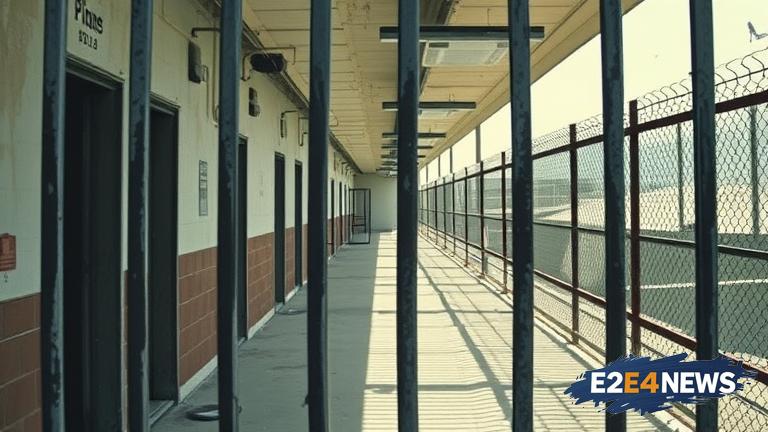The issue of air conditioning in state prisons has become a pressing concern in recent years, with many facilities lacking this basic amenity. This shortage has severe implications for the health and well-being of inmates, who are often subjected to extreme temperatures during the summer months. Prolonged exposure to heat can lead to heat-related illnesses, such as heat exhaustion and heat stroke, which can be life-threatening if left untreated. Furthermore, the absence of air conditioning can exacerbate existing medical conditions, such as hypertension and cardiovascular disease. The lack of air conditioning also affects prison staff, who are required to work in these sweltering conditions, often without adequate breaks or protective gear. This can lead to decreased productivity, increased stress levels, and a higher risk of heat-related illnesses. The debate surrounding air conditioning in state prisons is complex, with proponents arguing that it is a basic human right, while opponents claim that it is a luxury that prisons cannot afford. However, many experts argue that the benefits of air conditioning far outweigh the costs, as it can help reduce the risk of heat-related illnesses, improve inmate behavior, and increase overall prison safety. In addition, the installation of air conditioning systems can also help reduce the financial burden on prisons, as it can decrease the need for costly medical treatments and emergency responses. Despite these arguments, many state prisons continue to lack air conditioning, with some facilities relying on outdated and inadequate cooling systems. This has led to a growing number of lawsuits and complaints, as inmates and staff demand better living and working conditions. The issue has also sparked debates on prison reform, with many advocates calling for improved prison conditions, increased funding, and more humane treatment of inmates. In recent years, some states have taken steps to address the issue, investing in new air conditioning systems and improving prison infrastructure. However, much work remains to be done, as many prisons continue to struggle with inadequate cooling systems and sweltering temperatures. The consequences of inaction can be severe, with inmates and staff facing serious health risks and decreased quality of life. As the debate continues, it is essential to consider the human impact of the lack of air conditioning in state prisons, and to work towards finding solutions that prioritize the health, safety, and well-being of all individuals involved. The need for air conditioning in state prisons is not just a matter of comfort, but a basic human right that must be respected and protected. By investing in air conditioning systems and improving prison conditions, we can help reduce the risk of heat-related illnesses, improve inmate behavior, and increase overall prison safety. Ultimately, the goal should be to create a more humane and equitable prison system, where inmates and staff are treated with dignity and respect. This requires a comprehensive approach, involving increased funding, improved infrastructure, and a commitment to prioritizing the health and well-being of all individuals involved. As we move forward, it is essential to consider the long-term consequences of our actions, and to work towards creating a prison system that is just, equitable, and humane. The issue of air conditioning in state prisons is a complex one, but by working together, we can find solutions that prioritize the health, safety, and well-being of all individuals involved. By doing so, we can help create a more just and equitable society, where everyone is treated with dignity and respect. The lack of air conditioning in state prisons is a pressing concern that requires immediate attention and action. We must work together to address this issue, and to create a prison system that is safe, humane, and just for all. The consequences of inaction will be severe, and it is our responsibility to ensure that we prioritize the health, safety, and well-being of all individuals involved. By investing in air conditioning systems and improving prison conditions, we can help reduce the risk of heat-related illnesses, improve inmate behavior, and increase overall prison safety. This is a critical issue that requires our attention, and we must work together to find solutions that prioritize the health, safety, and well-being of all individuals involved.





